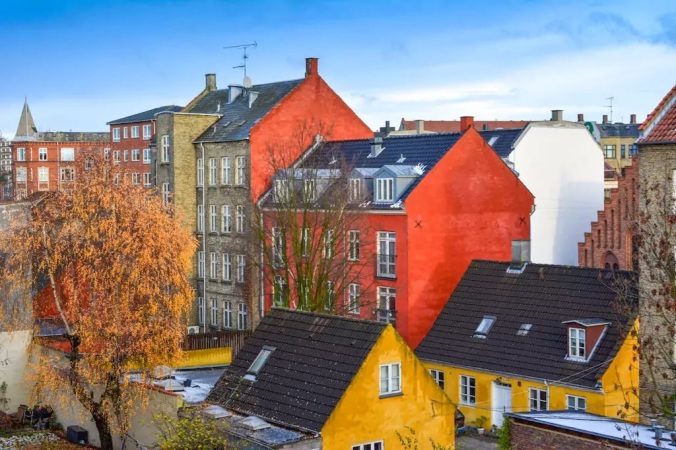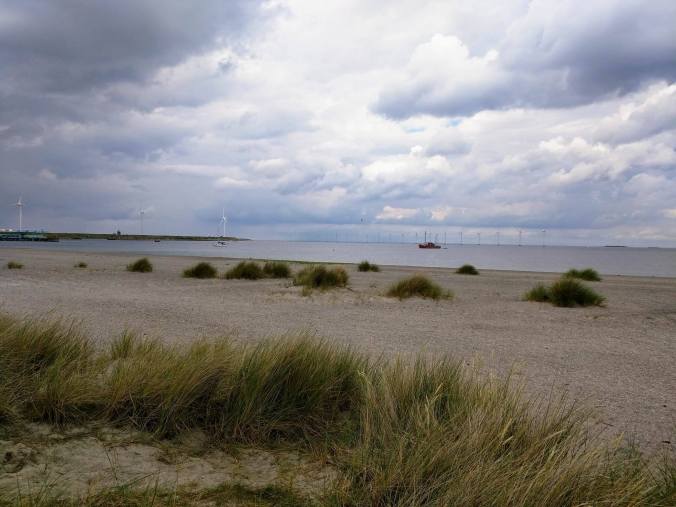Denmark on a Dime, or “You can take it with you (but you’ll have to pay for another checked bag)”
[Author’s note: this is post 3 in a Summer-long series on first time archival work. Feel free to check out part 1 and 2. As always, comments are welcome, whether you think I’ve gotten something wrong, right, or missed entirely. This series is meant to help grad students and other first time archivists, so the more perspectives the better.]
You got the grant—congrats! Now what? About planning that trip… ask my spouse— I’m a weird brand of type A personality. While I relish making 5 year plans as much as the next academic, I’m also very very okay with an art that I call “Inseam Aeronautics” a.k.a. “flying by the seat of one’s pants.” That is, when it comes to travel, my impulse is to let Wyrd sweep me where it wills, relying on my generally good luck, sunny disposition, and penchant for contentment to make the best of whatever happens. While this is a fun way to live (imho), THIS IS A TERRIBLE WAY TO PLAN A RESEARCH TRIP. What follows is a comparison of what I did to prepare vs. how useful that’s proven a week (or so) into the actual trip. Hopefully some of my bumblings can help you out in your voyagings.
First: budget. My grants made me do this, and boy am I glad. I had no idea how intricate the whole ‘living abroad’ process gets, especially if you’re in a country that requires visas (thankfully, Denmark doesn’t for under 6 months… bottom line: every country’s different, so get real cozy with their diplomatic websites). Verdict: keeping track of my money is helping me realize that I’m on track with my grant and I can afford to treat myself a little, maybe go out with my new Danish friends.
Second: consider conventional and unconventional options for housing—there are pro’s and con’s to both. My first impulse was “find cheapest housing possible.” Yes I’m a poor grad student, but I’m also an unrepentant skinflint/miser even in the most opulent of seasons (I prefer the term ‘thrifty’ or ‘economically efficient’, mind you). At first, I looked into nothing but dirt cheap hostels, trying to trim down my dollars-per-day as low as possible. The thing is, my sage spouse began asking me questions like “do you really want to share a room with two dozen strangers every night?” I replied “why not? Friendship is MAGIC!” She said “but you wake up if a pin’s shadow drops too hard.” Oh yeah… I guess I am an insanely light sleeper. I would be exhausted and miserable after a week of that… so know yourself. For me, it was wise to start looking for a place where I could at least sleep reliably in my own room. Hotels – like everything else in Copenhagen— turned out to be crazy expensive, especially on my non-touristy side of the city (Amagerbro), so I settled on AirBnB. Searching by map, I found a good one that’s only a 15 minute walk from my research library. While it is true that you can never actually know what to expect in advance with an AirBnB, I’ve always found it worthwhile. One way to mitigate the risk is to search the site for a host with a lot of positive reviews. Verdict: a week and a half in, I feel good about my choice, even though I ended up with a surprise flat-mate (I still have my own room, as advertised). I have a quiet place where I can reliably sleep, relax, and work; a kitchen at my disposal (which, in turn, saves me a ton of money on food); terrific wifi; and, rarity of rarities, a washer and dryer (they’re elusive in Europe). All at about $50/night. Plus I’m living in a real Danish neighborhood, which is so hygge. If you go that right, be a pal and use my referral link.

Other things to consider: food and entertainment. It’s no secret that eating out in Copenhagen is insanely, perversely, profligately expensive. Their idea of “a good deal” is a burger and fries for like $15-$20. Mind you, the fries tend to be hand made and the burger artisanally delish, but still. Not in my world. I’m no longer surprised that Vikings left here en masse– they were probably just trying to grab an affordable meal.
If you want to save money, I’ve cultivated two main strategies: (1) learn to love kebab/shwarma/döner (pace vegetarian/vegan readers). These restaurants are all over the place and they are actually cheap—at my corner café, “Tarboush Shawarma”, I can get a massive burrito sized meal for about $5. If you’re looking for a healthier option, consider my other strategy: (2) go to the grocery store. Yes, I know, it’s no one’s dream to live abroad and… peel vegetables (why don’t they sell freakin’ baby carrots here???), but let’s be real: that’s how actual Danes do it, and 5 million of them can’t be wrong. Pretend you’re playing Harvest Moon or something. Just know that grocery stores here are small and selection limited. But I’m looking to average ~$100 per week on food (including some treats like Lox and beverages), which wouldn’t even get me an appetizer at a Noma-style restaurant.
As for entertainment, I’ve opted to stick with books and writing (surprise surprise), and there’s always Netflix. But I’ve also come to enjoy long walks/runs around this charming city. Using the CityMapper App, I can find my way just about anywhere, and it’s really nice to have a feel for the layout of this place. Just look where I sat and read the other day! 
There are also many world class museums that are free on certain days of the week, so look for specials like that. And Copenhagen’s Jazz Festival is going on all week, with a lot of free concerts all over. Nice work, and you can get it if you try.
Some tips on packing. Keep your project in mind and let that guide your planning and packing. Yes, I love outdoor adventure, but will I really need hiking boots, everyday boots, running shoes, and dress shoes? Nope: consolidate and be realistic—I only need one pair of boots and one of shoes. I’m in the library most days anyway. But packing cubes are not overrated because they compress all those clothes that take up needless space. Also, be aware of the electricity situation where you’re going. American electronics are made for American 110v outlets. But standard outlets in Europe are 220v, so even with an adapter, you could severely shorten your computer’s/tablet’s battery lifespan without a proper converter. Verdict: I’m in love with the one I bought—it even has USB ports for my phone and external phone battery!
As for phones abroad, I don’t think you can beat Google’s Project Fi, especially if you find yourself around wifi often. $10 per GB of data is good anywhere in the world, and calls for me are twenty cents a minute. You can also save on international texting, voice, and video calls by using Facebook’s video chat feature– I’ve been impressed with its quality and stability, especially compared to other apps I’ve used in the past (::cough Skype::).
Again, in my thrift, I wrestled with “how much food to bring?” and, even harder, “how many books can I get away with?” Looking back, I’m glad I cut the 50 granola bars I tried to cram into my suitcase—they made my bag overweight and made me feel like a crazy doomsday prepper. And I can buy them at any grocery store here, so no biggie. But again, know yourself— you’ll be in an unfamiliar place, so creature comforts go a long way. Do you need coffee regularly? You should know that Europeans tend to prefer electric kettles to coffee makers and the like, so you’ll need to bring instant coffee (I recommend Café Bustelo) or a French press. And creamer is virtually unheard of here (they use… ::shudder:: plain milk), so if you like your coffee sweet and hydrogenated like God intended, then I recommend bringing a few of these (my local Kroger had a generic brand for $1.99 each).

[It’s dangerous to go alone! Take this]
I, personally, have found Rick Steve’s packing checklist very helpful. He has a general one (https://www.ricksteves.com/travel-tips/packing-light/ricks-packing-list) and one for women (https://www.ricksteves.com/travel-tips/packing-light/packing-list-women).
Lastly, learn to look good in red (tape). Make sure you comply with local governments and make a list of local embassies—they can be your friend if you find yourself in a hard place. But you have to play by their rules. Also, cover your own butt by considering not only traveler’s insurance (which covers the trip itself) but traveler’s medical insurance. I got some reasonably priced short term coverage through my AAA membership. Hopefully I don’t need it, but then I have a knack for bumbling into crazy situations (like that time I accidentally got trapped in a Pakistani border riot. But that’s a post for another day).
Look for silver linings: yes, this is a ton of work, but you’re abroad now! Getting to Europe is very expensive, but getting across Europe is quite cheap once you’re here (I guess because it’s tiny and invests in infrastructure). If someone else is paying for your airfare via a grant, you’d be nuts not to take advantage of this truth. So while I am doing 99% of my research at the Arnamagnaean Institute, I also managed to sneak in my first ever trip to the UK, and a one day visit to the National Library of Scotland in Edinburgh for some must-see Gaelic items of relevance to my dissertation. Consider taking a weekend trip or two to see other sights or libraries while you’re here (I’m planning to meet some long-lost family in the Czech Republic at the end of the trip). Okay, that about wraps up all my thoughts on planning and strategies for scrimping. If you have some of your own, feel free to add them in the comments! Look forward to my next post, which will be more focused on the experience of first time archival work. Until then—thanks for being awesome!
I love reading your blog!!! I will probably never get to Denmark but just enjoy your sense of humor & the way that you interject your personal, witty thoughts into everyday things. Be safe & enjoy the experience!
LikeLike